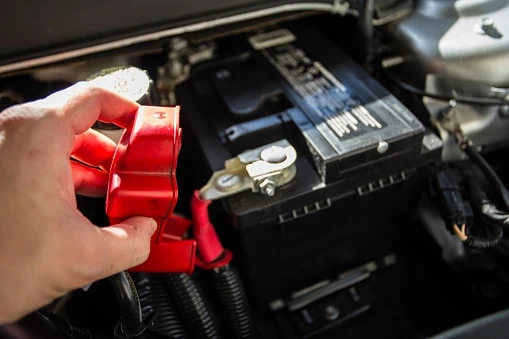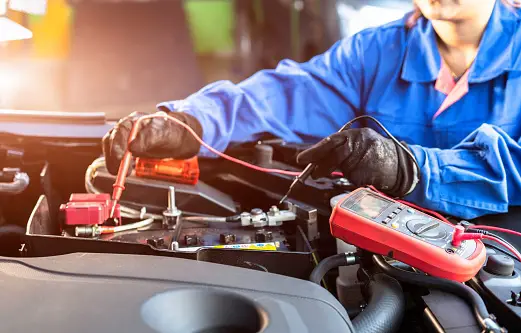A car battery is typically 12 volts and can deliver up to 650 amps. Batteries come in a variety of shapes and sizes, but all have a positive post, a negative post, and electrolytes that allow for an electrical current. When starting a car, the battery voltage increases and the starter motor uses the increased current to turn over the engine. To calculate how much current your battery can provide, multiply the battery voltage by the amperage rating.
How Many Amps Is A Car Battery?
A 12-volt battery with a 650 amp rating would provide 7200 watts of power. While this may seem like a lot, it’s important to remember that batteries are not designed to sustain this level of load for an extended period of time. So if you need to run a large number of accessories or power a high-wattage stereo system, you may want to consider upgrading to a higher amp rating.
What Is The CCA Or Cold Cranking Amps
The cold-cranking amps (CCA) is the measure of a battery’s ability to start a car in cold weather. Batteries with a higher CCA rating have more power to turn over an engine in cold weather. You can find the CCA rating on the battery itself or on the manufacturer’s website. When shopping for a new battery, make sure to compare the CCA ratings to find the best one for your needs.
How Long Will A Car Battery Last?
A car battery typically lasts 3-5 years, but this number can vary depending on how often it’s used, the climate, and the type of battery. To maximize your battery life, make sure to keep it properly charged and store it in a cool, dry place. You can also purchase a battery charger to keep your battery topped off between uses.
What Are The Warning Signs Of A Bad Battery?
If your car battery is starting to fail, you may notice some warning signs. These include dim headlights, slow engine cranking, and electrical problems. If you notice any of these issues, it’s important to have your battery tested as soon as possible to avoid being stranded with a dead battery.
What Is The Battery Reserve Capacity?
The battery reserve capacity (BRC) is the number of minutes a battery can provide 25 amps of current at 80 degrees Fahrenheit. This rating is important for determining how long a battery will last in standby mode. A battery with a high BRC rating will last longer than one with a low rating.
How Long To Charge A Car Battery At 2 Amps
It will take about 10 hours to fully charge a car battery at 2 amps. This is based on the assumption that the battery is completely dead and needs to be charged from scratch. If the battery is only partially discharged, it will take less time to charge. To calculate the charging time, divide the battery’s capacity by the charge rate. For example, if you have a 50 amp-hour battery and you’re charging at 2 amps, it will take 25 hours to fully charge the battery.
It’s important to note that batteries should never be charged at more than 10 amps. Charging a battery at too high of a rate can damage it and shorten its lifespan.
Is It Possible To Use A Charger With Higher Amps?
Yes, but it’s not recommended. Using a charger with higher amps can damage the battery and shorten its lifespan. If you need to charge your battery quickly, it’s best to use a lower amp setting and charge for a longer period of time. For example, if you have a 50 amp-hour battery and you’re using a 10 amp charger, it will take 5 hours to fully charge the battery.
Can I Use A Car Battery To Power My House?
No, car batteries are not designed for powerhouses. They are only meant to provide enough power to start a car engine. Attempting to use a car battery to power your house could damage the battery and create a fire hazard.
How to measure car battery amps
There are a few ways to measure the amps of your car battery. The most common way is to use a multimeter. You can also use an amp meter or an amp probe. If you have access to a professional automotive testing center, they will be able to test the amps of your battery for you.
FAQs
1. How Many Amps Does It Take To Start The Engine?
The average car battery has a cranking amps (CA) rating of around 700. This means that it takes about 700 amps to start the engine.
2. What Is The Difference Between Cca And Ca?
CCA stands for cold cranking amps and is a measure of a battery’s ability to start a car in cold weather. CA stands for cranking amps and is a measure of the starting power of a battery.
3. How Quickly Does A Car Battery Charge While You’re Driving?
While you’re driving, your car’s alternator recharges the battery. The charging rate depends on the alternator, but it’s typically around 10-15 amps.
4. Can I Use A Higher Amp Charger To Charge My Car Battery Faster?
No, using a charger with too high amps can damage the battery and shorten its lifespan.
5. I Think My Battery Might Be Bad, What Are Some Signs?
Some signs that your battery might be failing include dim headlights, slow engine cranking, and electrical problems. If you notice any of these issues, it’s important to have your battery tested as soon as possible.
6. Does A Battery’s Amp Rating Change Over Time?
Yes, as the battery ages, its amp rating will decrease. This is why it’s important to have your battery tested regularly to make sure it’s still in good condition.
7. Is It Dangerous To Jump-start A Car With A Dead Battery?
No, as long as you follow the proper procedures, jump-starting a car with a dead battery is safe. However, if you do not jump-start the car properly, it can be dangerous.
8. I Accidentally Overcharged My Battery, What Should I Do?
If you overcharge your battery, you should discharge it completely and then recharge it at the correct rate. Overcharging a battery can damage it and shorten its lifespan.


